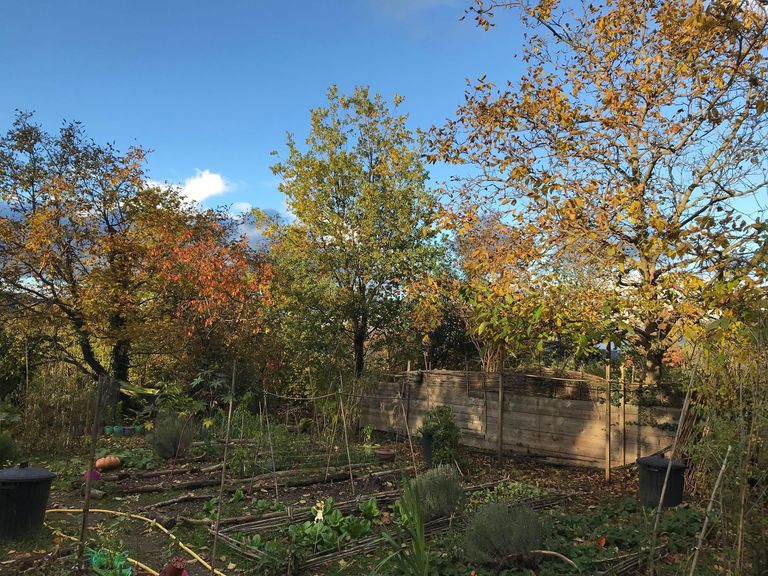
Long have I known of the vast possibilities for ways in which one can prepare acorns but only now that I have tasted them do I understand how very important they once were to the people of this region. After cooking, their smell is similar to that of caramel and their taste something along the lines of a chestnut, but different. It awoke a distant memory in me and somehow felt familiar yet the truth is that I have never before eaten them. Not in this body anyway. Perhaps in other lives I used to eat them every day? Perhaps we all did! According to this clever lady who seems to know a lot about acorns, they used to represent 60% of our diet. And why not? They are super nutritious, they taste great and they grow in abundance on all continents.
Check out some of the different ways they can be prepared, as suggested by the clever acorn lady.

Here in the French Pyrenees I noticed recently how the oak trees have very often been planted above the canal which for the purposes of agriculture feeds most of the villages with water diverted from a river further up the mountain.

What this means is that acorns drop onto the path beside the canal at this time of year, making it impossible not to walk on them.
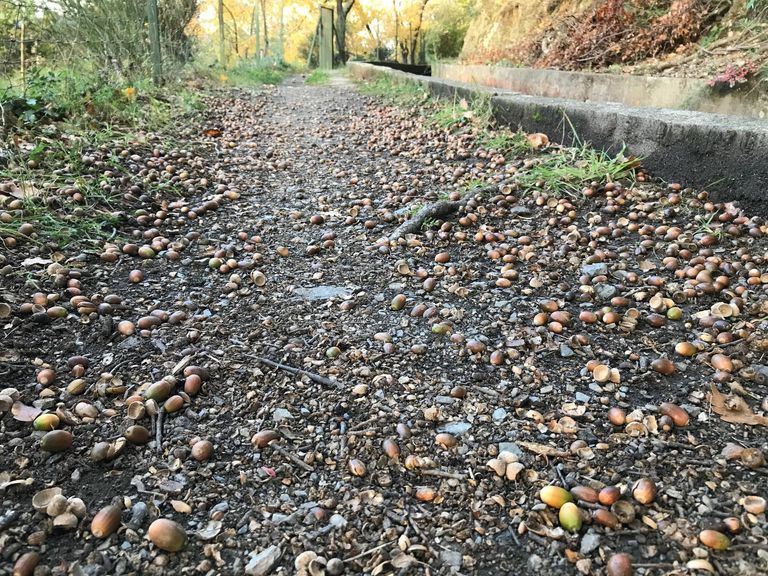
There is something about this path which seems to sum up quite well the absurdity of our so called 'advanced' society. So advanced that instead of eating the free, abundant & nutritious food which grows all around us and drops conveniently at our feet, we walk on it until it has been trampled into the mud. What must those poor trees think of us? I know they don't 'think' in the conventional sense of the word but I believe they do feel what is happening around them (clearly demonstrated by the phenomena known as singing plants) and in particular they can sense what is happening to the seeds they offer us each year. So in this moment they are smiling at me, pleased that one person here has finally remembered how acorns are so much more than just nuts for squirrels!
Prior to this moment I actually took a relative amount of pleasure from the sensation of squashing them under my feet (sorry trees) but that will not be possible any more.
Acorns also by the way lend themselves perfectly to long term storage due to the tannin which acts as a natural preservative, so unprepared (and dry) they will last as long as ten years.
The canal itself fills up with them at this time of year. The ones with worms tend to have a little air in them so they float away, while the good ones sink to the bottom.
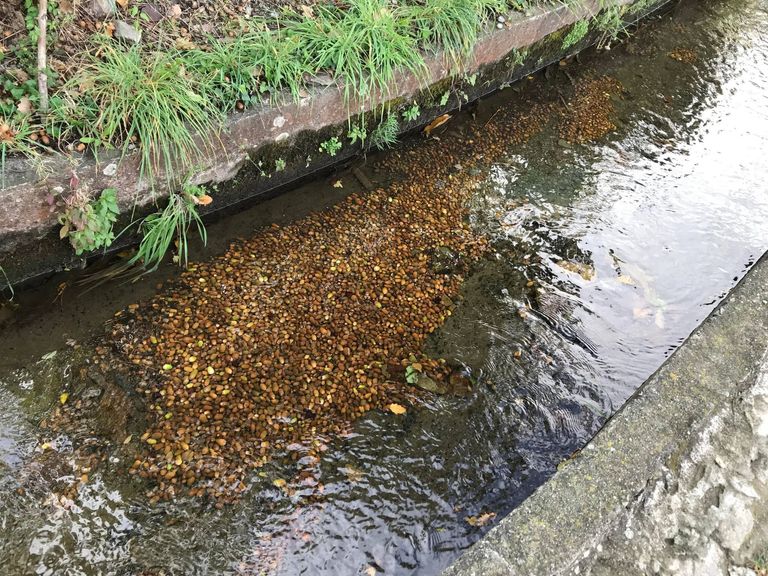
Watching them in the water over the last month I observed how they started to open after time and it suddenly dawned on me these oak trees were not planted here by chance!
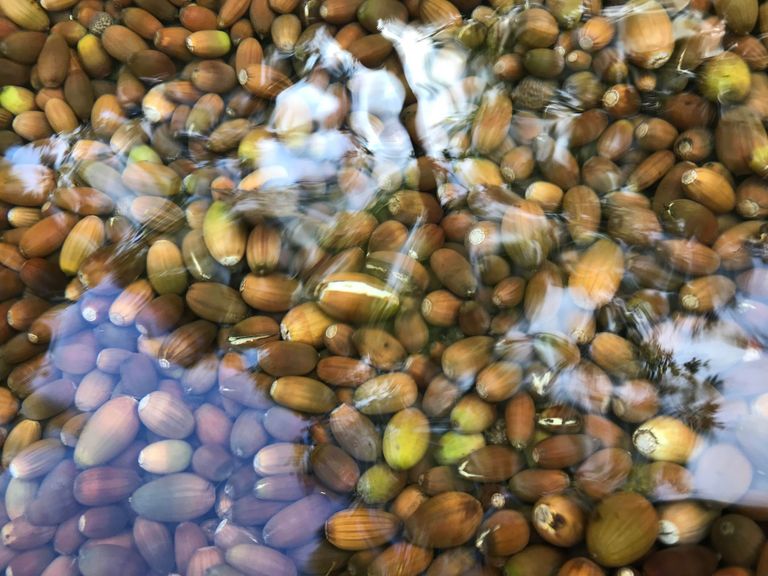
In fact, by sitting in the cold & constantly changing water of the canal, the acorns were undergoing the exact process they needed to rid them of their bitter tasting tannin. So I believe these trees were planted here with intention, but it has been many decades now since the people of these villages understood what to do at this time of year. I could even imagine how in the past it would have been someone's job to gently push the acorns off the path into the canal where after a month of 'processing' they would have been collected up and handed out to the village.
Quickly inspired by my observation, I collected a ton of the best looking acorns I could find from the edges of the path. I did not collect the ones from the canal because thanks to that wonderfully advanced world of ours, the farmers up the mountain use chemical pesticides & fertilisers which seep into the canal water, making it undrinkable and therefore rendering the simple & effective methods of our forefathers unusable.
I put my collected nuts in water to identify the ones with air/worms and slapped the remainder down on my kitchen table, ready to work.
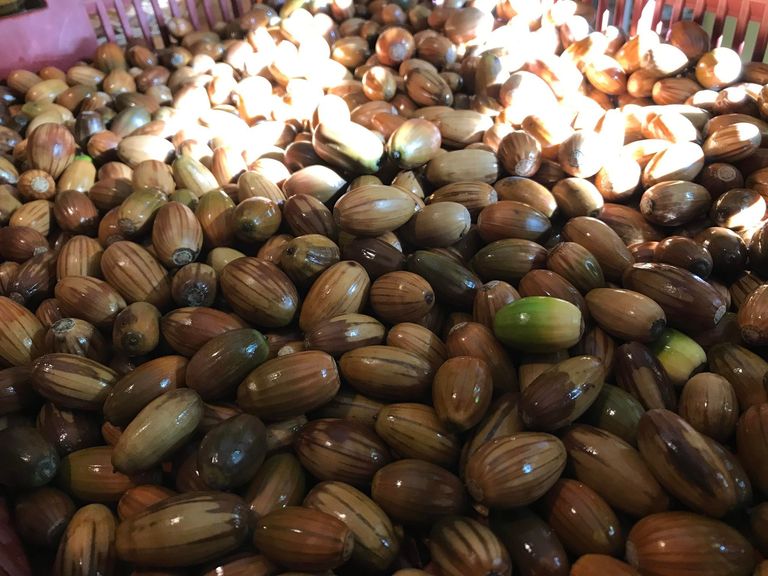
Couldn't find a hammer so I used this wooden lemon squeezer to whack each one before peeling away the shells.

Had I been able to use the acorns from the canal the shells would have fallen away easily, but instead it was a long and laborious process so if anyone knows of a way to shell acorns on mass I would be interested to learn it! That being said, I could imagine a bunch of people sitting together for a day to get this job done being both effective and fun.
The cold water processing method takes around a week, changing the water every time it gets cloudy, which is basically two or three times a day. By cutting them up into smaller pieces the process is sped up.
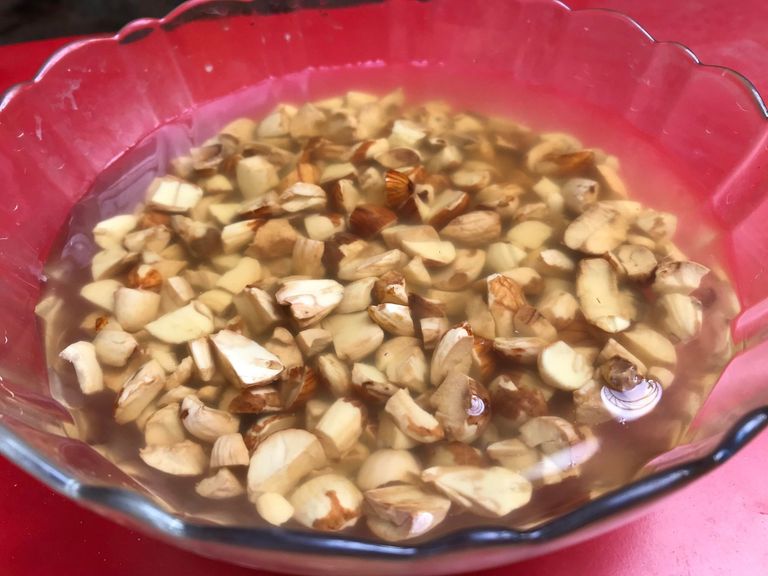
The hot water method permits one to eat them immediately. Just boil a full kettle of water adding a little bit to your acorns. Bring to the boil on the stove and discard the water when it becomes cloudy, replacing it with more boiling water from the kettle. Repeat this process till the water remains clear even after a few mins of boiling. For me all of this took around 15 mins.
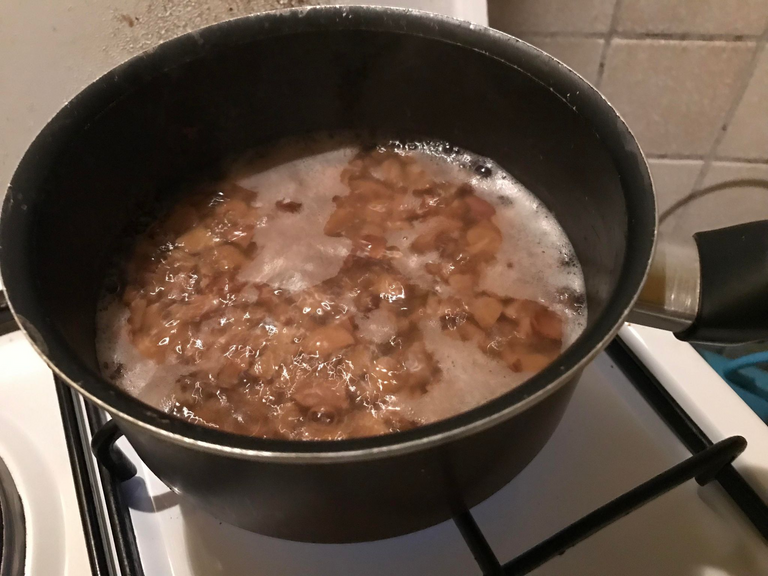
The process changed their colour a little and I can see now why the interior of acorns are referred to as meat.
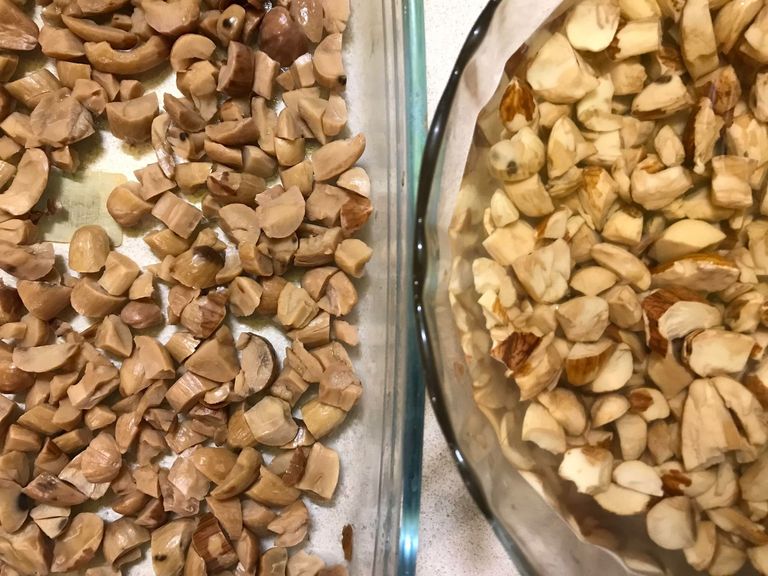
The above comparison shows hot processed acorn meat alongside the cold processing batch.
I left the hot batch to dry overnight and put them in the food processor in the morning for a few mins. And there we have it!
Acorn flour.
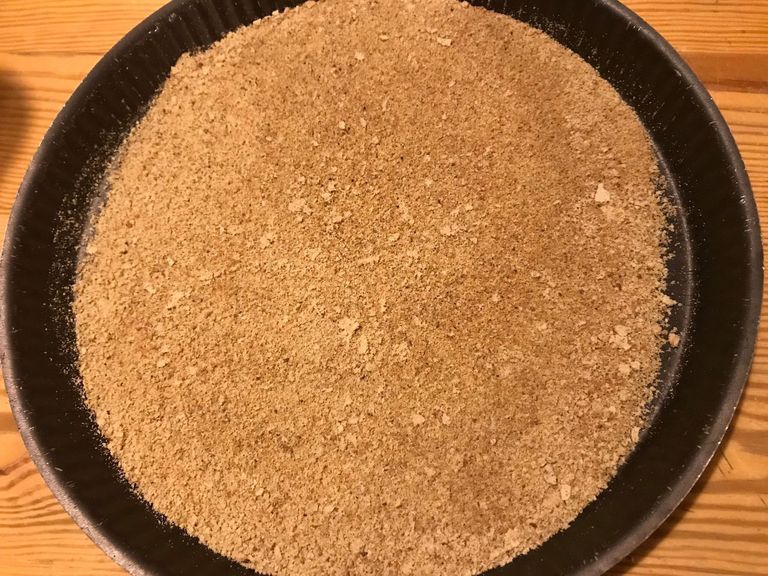
If I intended to store this flour I would have dried it further and processed it again to make it finer, but keen to add this to my daily bread mix as it was, I did not process beyond this.
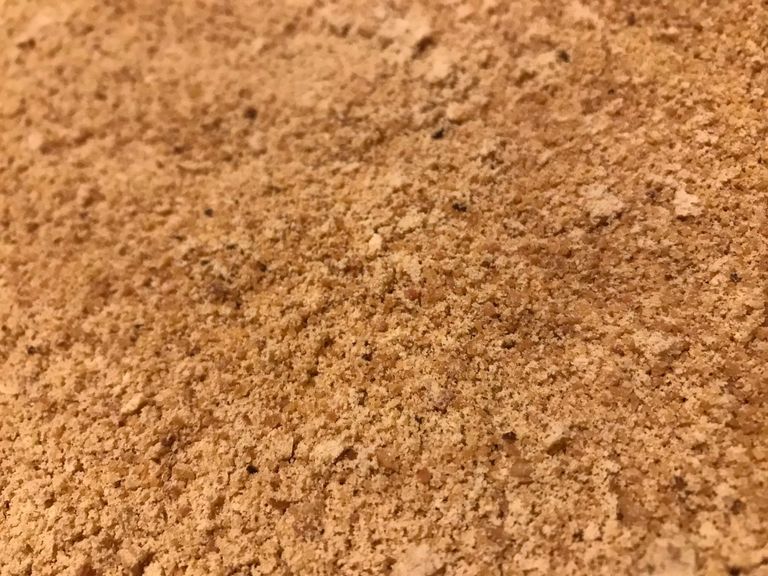
Bread time
Thanks to the actions of @sauna who sent me some sourdough starter from Canada last year (how you doing buddy?) I have been making bread regularly this year and enjoying it very much. However, with the price of flour on the rise and serious shortages looming on the horizon I am keen to find alternatives which are not only free and abundant but most importantly acceptable to the palates of my very picky family!
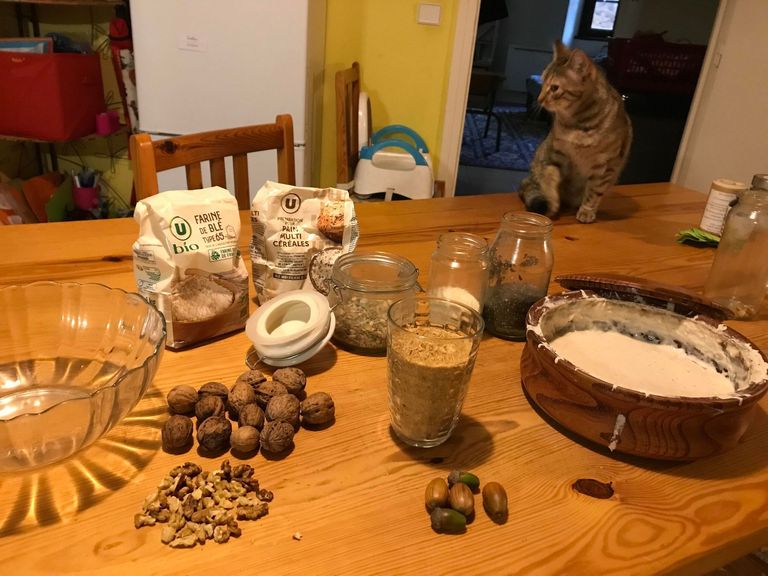
Here you can see all the ingredients I normally use, plus one cup of acorn flour.
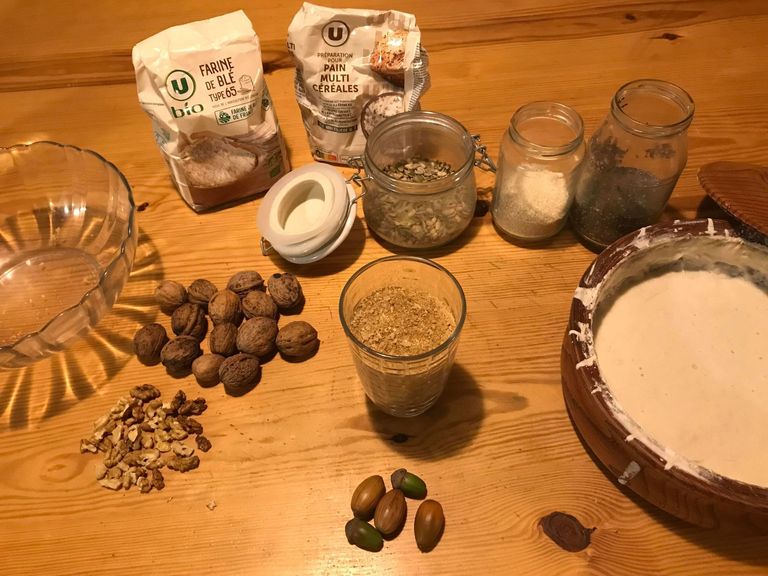
The first thing into the mix is always the sourdough starter which is then fed with more four and left to rest for a few hours before going back in the fridge.

Here you can see the acorn flour along with my usual combination of type 65 (relatively white) & a little multi grain.

Into the bowl everything goes, making sure to add a healthy mix of walnuts (from our garden) and seeds from local shops. I usually add sunflower, pumpkin, pine nuts, poppy seeds, sesame & flax.
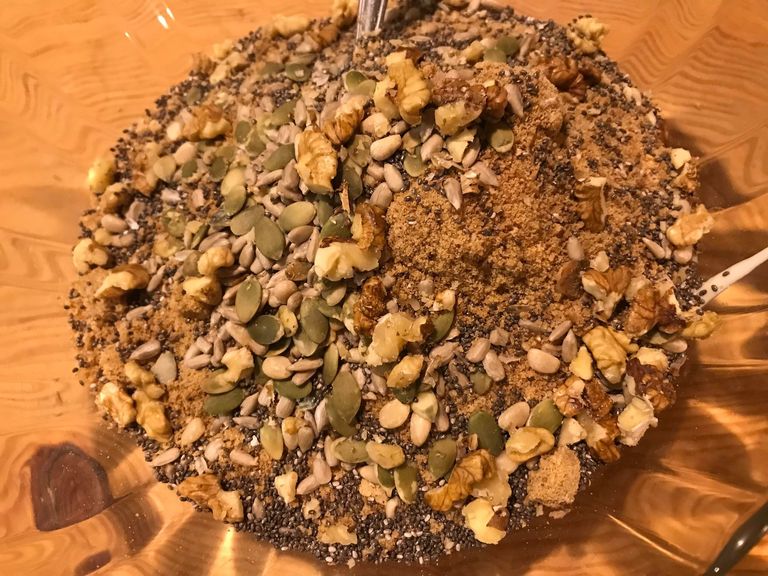
After adding water and working the dough into a ball, I cover it and leave here for around six hours.
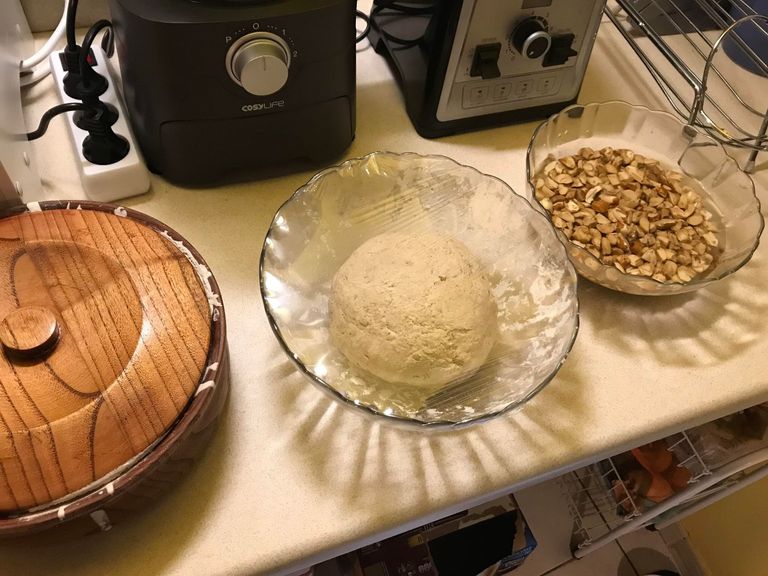
For the next stage I add salt (dissolved in a little water) and work the dough again before resting it in a greased & floured baking dish for three hours. Just before baking I add some extra seeds & nuts and cut some grooves in the top for style.
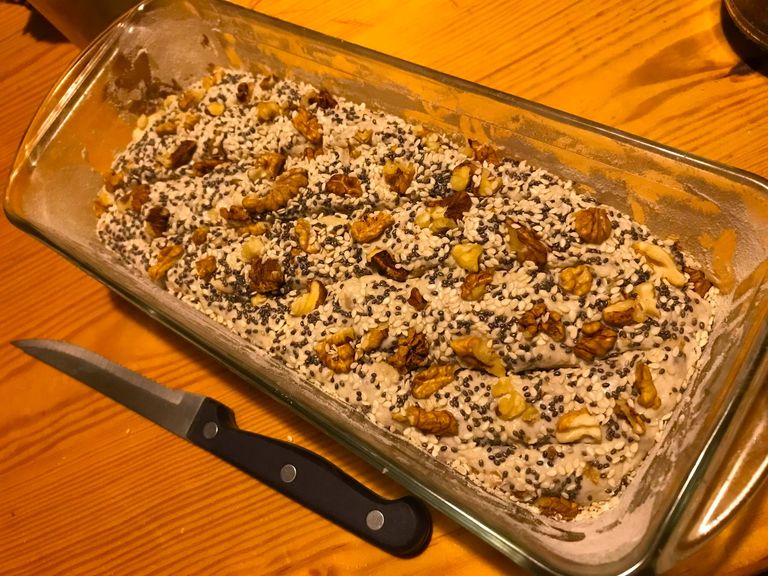
The bread is covered for the first part of the baking process (25 mins at 220°C) and only for the last 10 mins is it uncovered to toast the top bit to perfection.

Roasted walnuts are of course a little bit special!
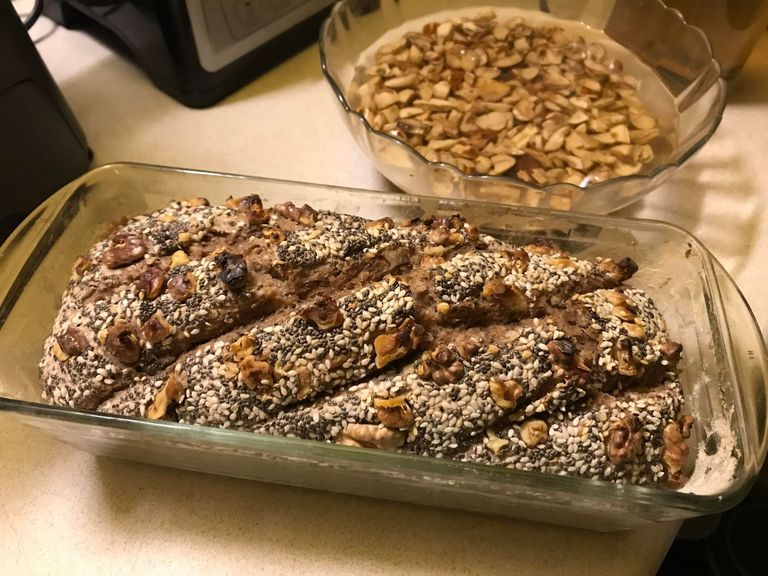
The bread must be removed from the baking dish immediately and left to cool in a way which permits airflow all around it. Sit it directly on the table and the base will go soggy.
I was super excited to cut into it once cool!
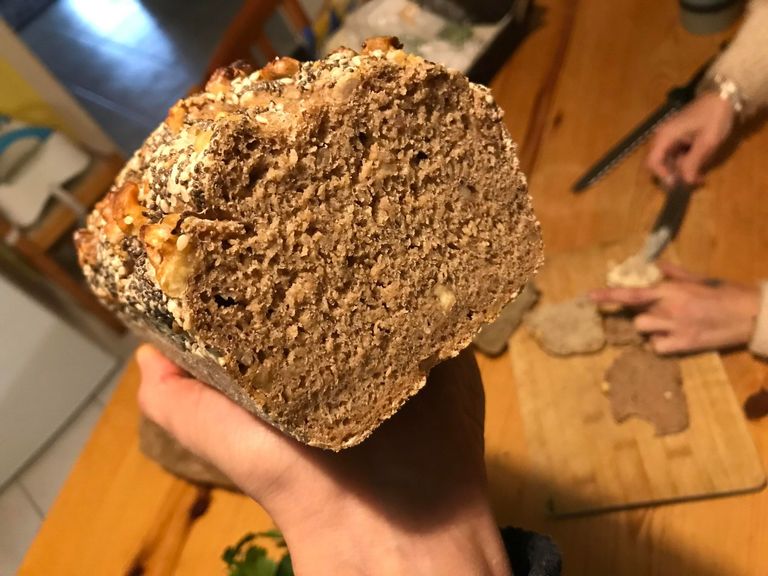
The consistency was perhaps a little thicker than usual and I observed how it may have needed longer than three hours to rise once the salt had been added.
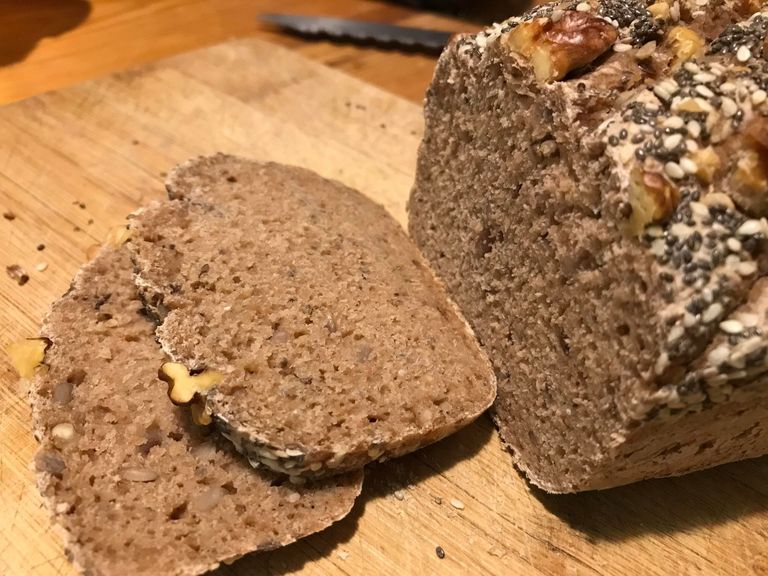
The colour was quite unique, a cross between red & orange, more easily seen when compared to the remainder of my previous loaf.
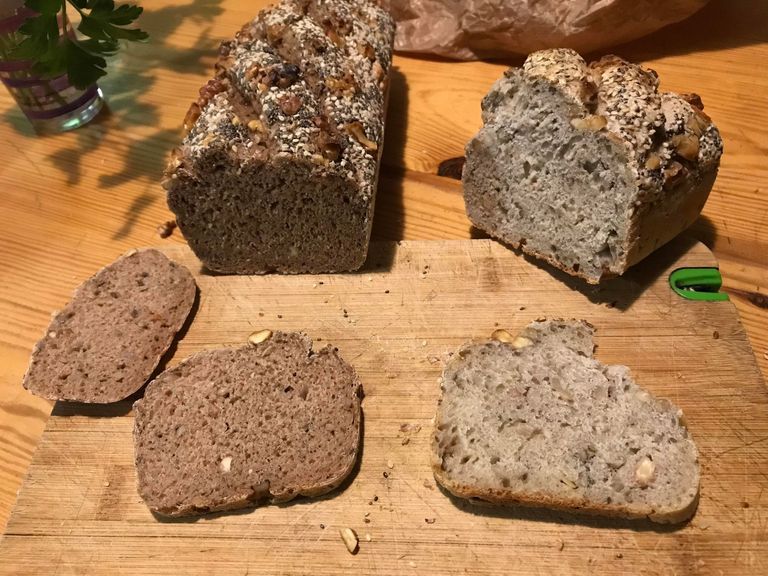
Upon tasting I discovered it wasn't all that different from normal! This was unexpected. The kids (who are the acid test) ate it without hesitation for breakfast, which is really great news! But ever curious to push further, I want now to taste a loaf which is 100% acorn, just to capture that unique flavour which is barely detectable in a 50/50 mix. Perhaps I have already reached the moment in my life when I can throw out the GMO corn flours which hold very little nutrients to replace them once and for all with an organic, sustainable and nutrient packed alternative?
Now wouldn't that be something!
Love & Light everyone 🌱
